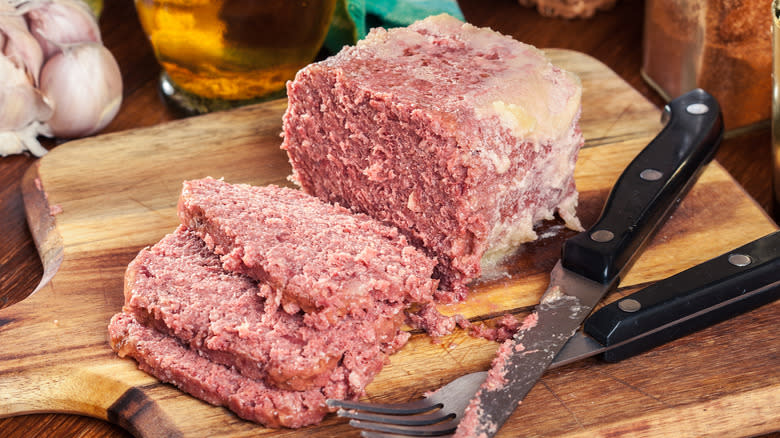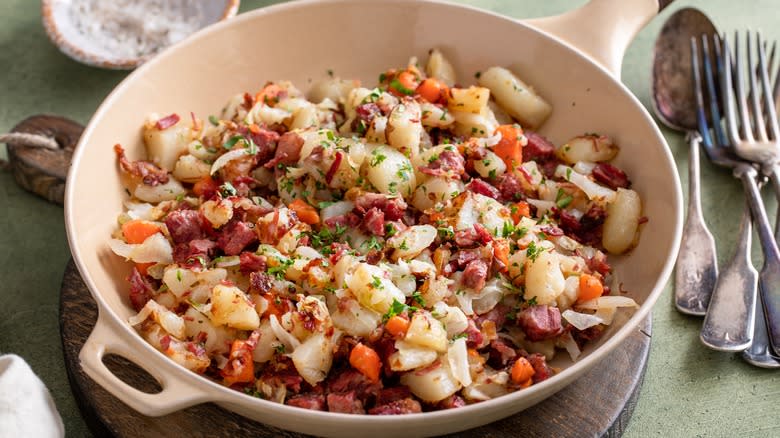What Canned Corned Beef Is Really Made Of

Right out of the can, corned beef isn't the most appetizing-looking food around. Packed into a mushy, pink clump coated with a translucent film of fat, it's a far cry from the juicy-looking beef slices in the Reuben sandwich you'd get from a deli. Beyond the first impressions, though, is a pantry staple that's easy to whip up into a tasty meal.
Corned beef is made of beef, specifically leaner, tougher cuts like the round. Home chefs typically use brisket but manufacturers go for less expensive cuts. The beef first goes through either dry or wet curing . The former uses salt, nitrate, and nitrite to cure meat for five to seven days at 39.2 degrees Fahrenheit while wet curing pickles the meat in a solution of water and the aforementioned preservatives for seven days at the same temperature. The size of the salt is actually the origin of one of the myths about corned beef. "Corn" used to be the umbrella term applied to any kind of granule or grain. Since the curing salt's dimensions are comparable to that of a corn kernel, people began to refer to it as corn, too. Thus, "corned" refers to the preservation method used on the beef.
As for why canned corned beef looks so pink, the book "Processed Meats" (via Science Direct) explains that it's from the sodium nitrite reacting with the color pigment in the beef. It fades away once the meat gets exposed to oxygen and light.
Read more: 20 Popular Canned Soups, Ranked Worst To Best
Corned Beef Is Safe To Eat Raw But Tastes Better When Cooked

After the curing process, the beef then gets tenderized through pressure steaming so it becomes easier to break down by hand. Pepper, sugar, and sodium glutamate are then added to it as flavoring agents. The meat is also mixed with beef tallow and broth or water so it gets optimal moisture content. Afterward, the beef gets stuffed into cans while it's still warm. The cans are sealed and then get sterilized in a pressure cooker, also known as a retort, to eliminate microorganisms and make them shelf-stable. This makes corned beef safe to eat straight from the can. However, you might find its texture off-putting, especially with its gelatinous pieces of fat. Just a quick saute with garlic and onions can turn it into a tasty dish.
Its affordability has made corned beef popular among Irish Americans, who have made it a tradition to serve it on St. Patrick's Day. This food item also has a global reach and is served in Jewish delicatessens and used in Caribbean and Southeast Asian cooking. In the Philippines, it has also made its way into sinigang, with the savory meat swimming in sour broth. There are many creative dishes you can prepare with corned beef. Use it as a sandwich filling, include it in casseroles and stews, add it to meatloaf, or simply break it up and saute in a skillet to build the foundation of a hearty corned beef hash. Give this canned meat a try and it might just become your new, unexpected favorite.
Read the original article on Tasting Table.


